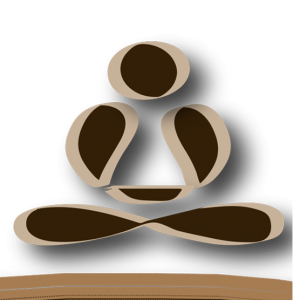Therapeutic massage is a term used to describe a type of massage that is focused on a specific goal. For example, while a full body massage may feel great and relax you, it may not provide specific relief from the chronic muscular stress that you feel in your neck, shoulders or lower back. Or perhaps you are recovering from an injury and would like some targeted attention on a particular area of your body. Therapeutic massage may be what you need.
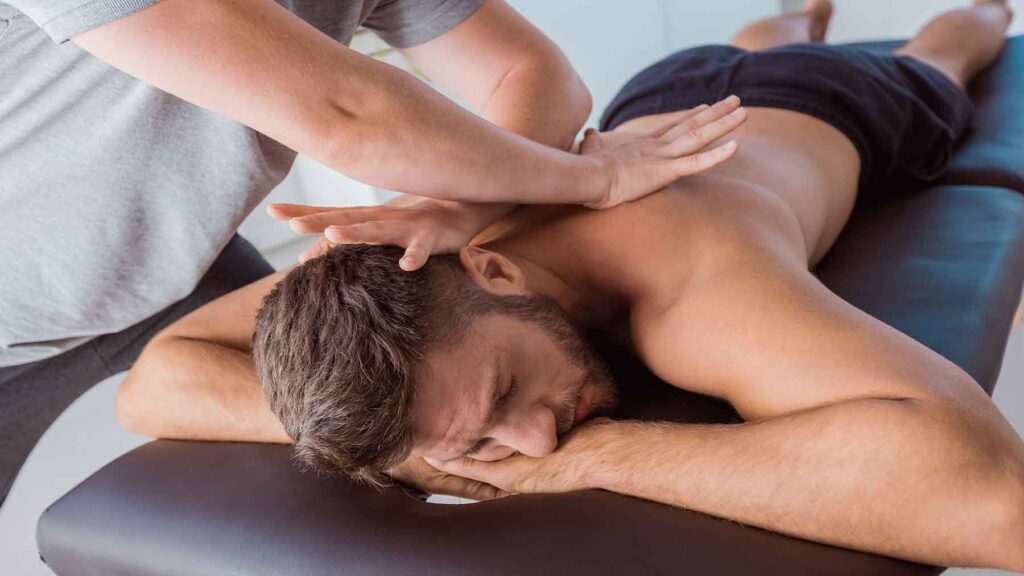
Therapeutic massage sessions are customized to your particular needs and presentation, drawing on various modalities and techniques such as Swedish, Deep Tissue, Trigger Point therapy, Precision Neuromuscular Therapy, positional release, Myofascial release, etc. In short, whatever training and expertise your therapist has under their belt may be incorporated into your massage. The stroke pressure used by the Therapist varies depending on the particular point or muscles (s) being addressed as well as your individual discomfort threshold. In this regard, you, as the client, are in complete control. Only you know the sensations you are feeling and the limits of your body. Some areas are more sensitive than others and pressure should never go beyond “comfortable pain”; just enough for your body to know it is the ‘spot’ but not so much that you tense up and have to hold your breath or ‘guard’ the area. Typically, this type of a massage is interactive, during portions of the session where targeted work is being performed, communication between you and therapist is key.

Space Coast Massage Treatments
Call to book your appointment! 321-676-3383
Location: 966 S Wickham Rd Suite 101, Melbourne, FL 32901
Restorative Bodywork & Massage
MEET Marie Perlongo, LMT #MA84973
Restorative Bodywork & Massage
“Freeing your Body & Mind to Work Optimally”
A GENTLE HAND’S ON METHOD FOR IMPROVING THE NERVOUS CENTRAL SYSTEM.
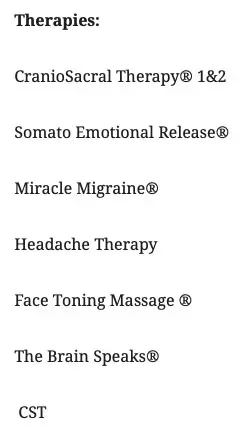
CranioSacral Therapy (CST) is a gentle method of evaluating and enhancing the functioning of the physiological body system called cranial system. By complementing the body’s natural healing processes, CST is increasingly used as a preventative health measure for it’s ability to bolster resistance to disease and is effective for a wide range of medical problems, associated with pain and dysfunctions.
Practitioners also use CST to loosen and release restrictions in the fascia (the thin layer of tissues that surrounds individual muscles and organs and their groups). These restrictions contribute to all sorts of pain and disfunction. Removing them improves the functioning of the central nervous system and the body as a whole.
Many people experienced not only improved physical functioning but also improved mental clarity and emotional well being. The CraniaSacral therapist helps the body release restrictions that inhibition’s the body’s normal, self correcting tendencies. Restrictions it has been unable to overcome on its own. Since every body is different, rather than deciding how these changes should be made, the therapist follows subtle rhythms and cues from the body on how to proceed.
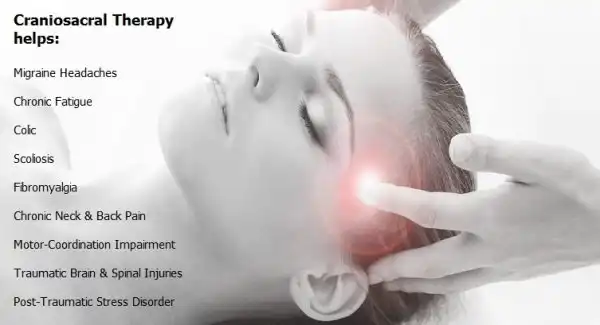
Helping people with:
Headaches
Stress & Rest Management, Anxiety & Depression, Emotional Release “Grounding Balance”
Injury Recovery, Pain & Inflammation
Flexibility, Range of Motion, TTMJD, Post Surgery Adhesions & Swelling,
Plantar Fasciitis, Carpal Tunnel, Arthritis, Fibromyalgia, Lymph,
Frozen Shoulder, Fatigue, Sleep & Energy
WHY MASSAGE THERAPY?
Massage therapy is used to help manage a health condition or enhance wellness. It involves manipulating the soft tissues of the body. Massage has been practiced in most cultures, both Eastern and Western, throughout human history, and was one of the earliest tools that people used to try to relieve pain.
WHAT ARE THE DIFFERENT TYPES OF MASSAGE?
The term “massage therapy” includes many techniques. The most common form of massage therapy in Western countries is called Swedish or classical massage. Other styles include sports massage, clinical massage to accomplish specific goals such as releasing muscle spasms, and massage traditions derived from Eastern cultures, such as Shiatsu and Tuina.
DO MASSAGES HELP PAIN?
Massage therapy has been studied for several types of pain, including low-back pain, neck and shoulder pain, pain from osteoarthritis of the knee, and headaches. Like most massages, the client is generally undressed and covered, or ‘draped’ for the duration of the massage, uncovering areas only as they are to be worked. Depending on the techniques being used, lotion or oil may or may not be used.
Based on the unique symptoms and complaints of the client, the acute or chronic nature of the issue and the type of session work, more than one session may be necessary. The longer the body has been experience a problematic issue, the more likely it is that multiple sessions will be required. It is also optimal for the client to follow after-care guidelines and any suggested ‘homework’ in order to potentiate the session work and expedite therapeutic goals. The body is a complex system and we must give it the opportunity and time to process and release at its own pace.
Although massage itself is not a panacea, its benefits can be wide-ranging. In fact, in some cases surgeries and more aggressive medical treatments can be avoided by receiving regular massage sessions.
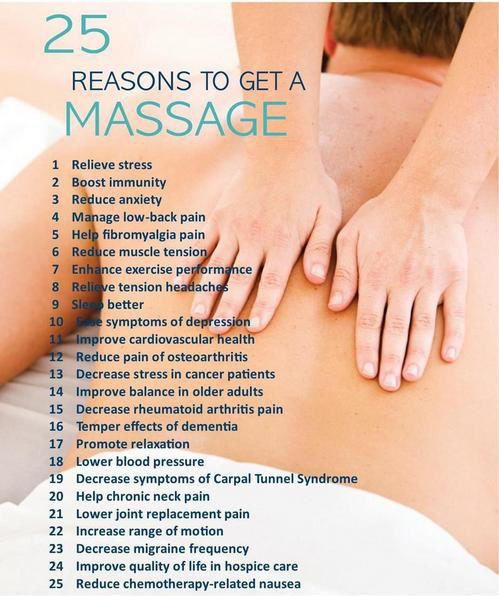
Massage Beneficial Effects
Peer-reviewed medical research has shown that the benefits of massage include pain relief, reduced trait anxiety and depression and temporarily reduced blood pressure, heart rate and state anxiety. Theories behind what massage might do including blocking nocieption (gate control thirty) activating the parasympathetic nervous system which may stimulate the release of endorphins and serotonin, preventing fibrosis or scar tissue, increasing the flow of lymph and improving sleep but such effects are yet to be supported by well designed clinical studies.
Single Does Effects
Pain relief: Relief from pain due to musculoskeletal injuries and other causes is cited as a major benefit of massage. In one study, cancer patients self-reported symptomatic relief of pain. Massage can also relieve tension headaces. Shiatsu, acupressure or pressure point massage may be more beneficial than classic Swedish massage in relieving back pain.
State Anxiety: Massage has been shown to reduce state anxiety, a transient measure of anxiety in any situation.
Blood Pressure & Heart Rate: Massage has been shown to reduce blood pressure and heart rate as temporary effects.
Attention: After massage, EEG patterns indicated enhanced performance and alertness on mathematical computations, with the effects perhaps being mediated by decreased stress hormones.
Other: Massage also stimulates the immune system by increasing peripheral blood lymphocytes (PBLs).
Multiple Dose Effects:
Pain Relief: When combined with education and exercises, massage might help sub-acute, chronic, non-specific low back pain. Furthermore, massage has been shown to reduce pain experienced in the days or weeks after treatment.
Trait Anxiety: Massage has been shown to reduce trait anxiety; a person’s general susceptibility to anxiety.
Depression: Massage has been shown to reduce subclinical depression.
Diseases: Massage, involving stretching, has been shown to help with spastic diplegia resulting from Cerebral palsy in a small pilot study.
Address: 966 S Wickham Rd Suite 101, Melbourne, FL 32901
Call to book your appointment: 321-676-3383
The information contained on this website is not intended to diagnose, treat, or intervene in any medical condition. The circumstances of each patient are different. Treatment is offered only after an appropriate medical consultation and assessment. Outcomes are never guaranteed. Individual results vary.
Serving the Space Coast of Florida since 2014.
